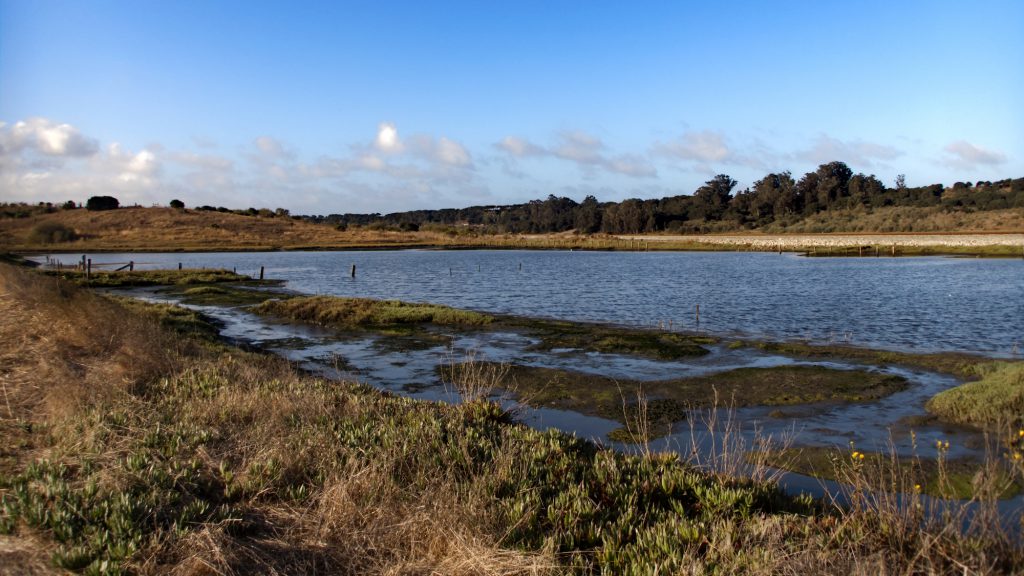
This time of year is when California earns its nickname as the Golden State. It isn’t only the dried vegetation blanketing the hillsides. The light itself takes on a golden hue, especially in the morning and evening when the sun is low on the horizon. Photographers call the time periods just after sunrise and just before sunset the ‘golden hour’ and with good reason. Some of my favorite photos were taken in either the early morning or late evening.
Today the Elkhorn Slough National Estuarine Research Reserve (ESNERR) held an open house event. Booths were set up on the field outside the visitor center, with information on native plants, research projects taking place at the slough, a watershed demonstration, mosquito abatement tactics, face painting for kids, and even a food truck. I hadn’t been to the slough since early summer, and when I got the notice about the open house I decided to spend the morning there. I’d hike around a bit, take some pictures, and do some nature journaling.
It certainly was a beautiful morning. It had been swelteringly hot earlier in the week, and fortunately the heat had lessened. There was a strong cool breeze and the sky was a clear blue.
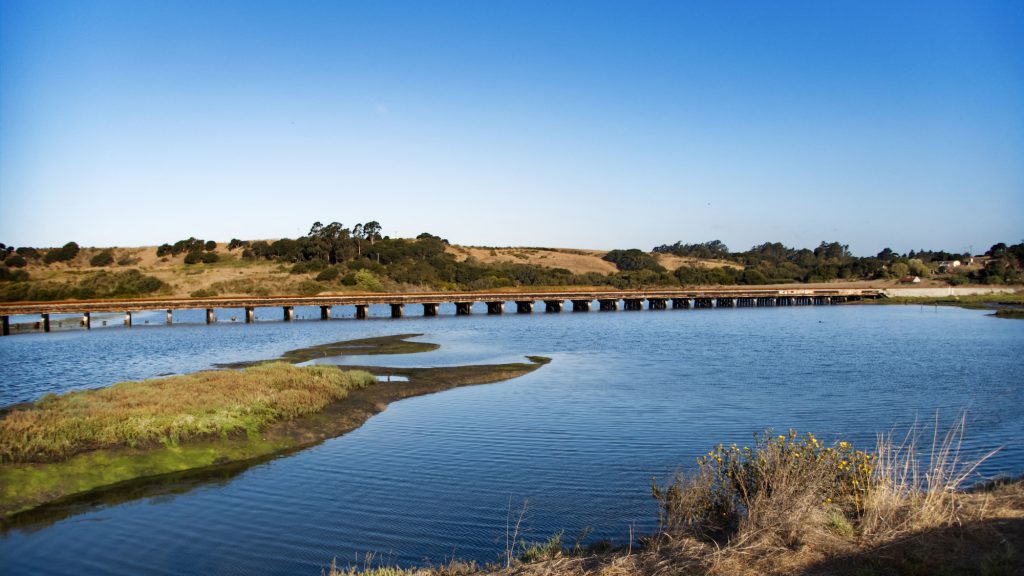
28 September 2019
© Allison J. Gong
In the spring, when I bring my Ecology students to the slough, the landscape is green. The grasses are green and wildflowers are in bloom. Even the pickleweed looks nice and fresh in the spring. Six months later, however, those same grasses are brittle and brown, and most of the wildflowers have long gone to seed and senesced. The live oaks retain their foliage throughout the year, and after two successive wet winters they are lush and green.
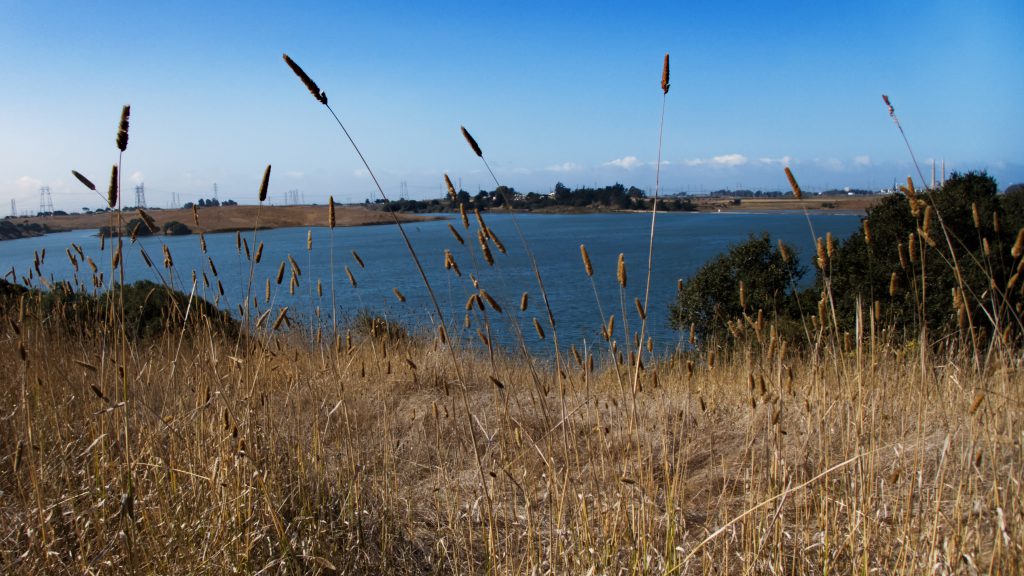
28 September 2019
© Allison J. Gong
When I arrived at the reserve this morning I spent a few minutes touching base with acquaintances and meeting some new people, then wandered off on one of the trails. It was a little chilly, very welcome after the previous heatwaves, and I sat on a bench to do some painting and looking around. After about half an hour I heard something behind me that didn’t sound like the wind blowing through the grasses. It was much more rhythmic and regular–definitely some critter walking through the brush. Very quietly, I stood up and sneaked around the oak tree to see a group of three or four juvenile wild turkeys disappearing into a thicket.
All in all I had a pretty good two hours of bird watching. I don’t consider myself a birder, really. I enjoy watching birds, just like I enjoy watching other animals. The competitive aspect of birding is a real turn-off for me. I don’t care about keeping a life list and comparing it to anybody else’s. That said, I do like to keep note of what I see at a given time and place, because it helps me understand the natural world a little better. For example, the other day I heard my first golden-crowned sparrow of the season, and although I haven’t seen it yet, knowing it is there makes me think that autumn has truly arrived.
In past decades, several different groups of people have been working to restore natural habitat to the slough. One of the earlier ideas was to build artificial islands, hoping they would encourage the marsh plants such as pickleweed to recruit and expand to their former abundance. It didn’t really work, but the islands do provide places for resident and migratory birds to stop and rest.
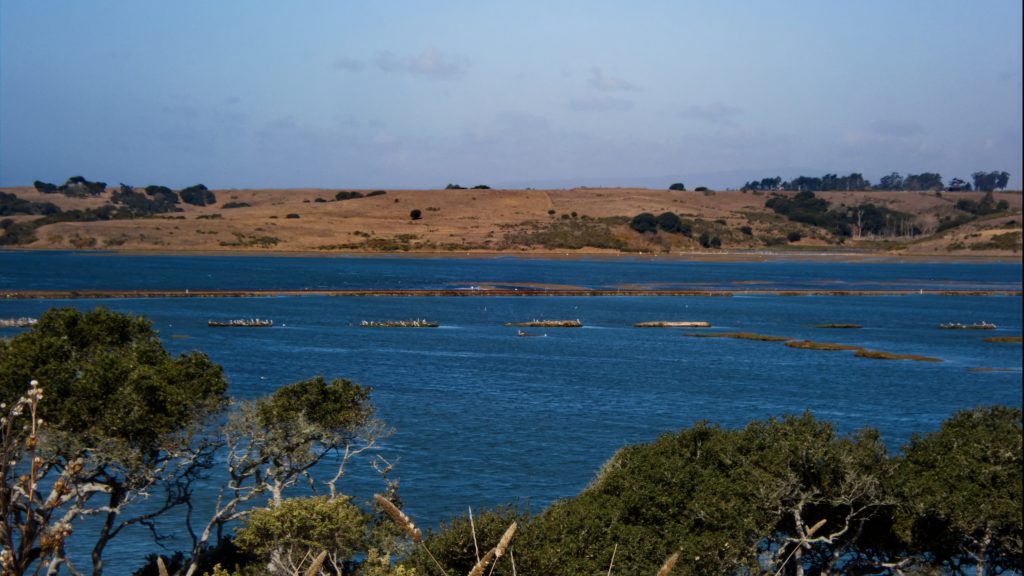
28 September 2019
© Allison J. Gong
More recently, a consortium of stakeholders has worked to restore marshlands closer to the ocean. They filled in areas that had been completely flooded, and pickleweed recruited there on its own. That area has been restored to a much more natural condition, with meandering waterways and pickleweed that isn’t drowned by seawater. Elkhorn Slough falls into several jurisdictions at the federal, state, and local levels, and getting these groups to work together for a common goal can be difficult. The success that they have had speaks to their willingness to cooperate. I think it helps that any actions taken are based on science, rather than politics or economics.
Over the summer, a lot of work was done to eradicate non-native plant species. This work is ongoing, and may very well never be finished, but it is good to the ecosystem to try. An island called Hummingbird Island has been rid of invasive eucalyptus trees, and now the only trees there are native live oaks and cypress. The trail I hiked went through several areas where trees has been cut down.
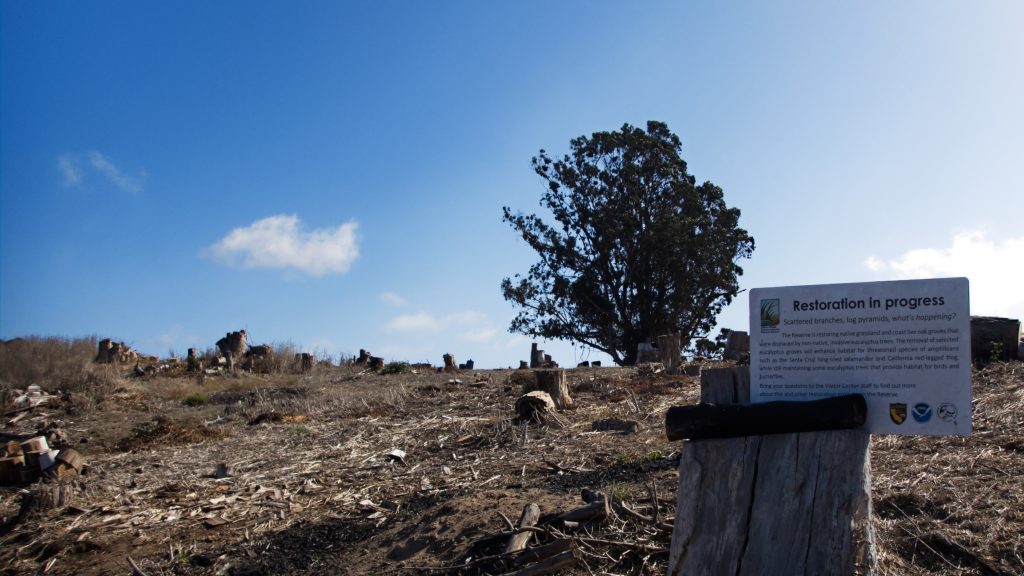
28 September 2019
© Allison J. Gong
Remember that train I mentioned? Here it is, traveling through the slough at about midday.
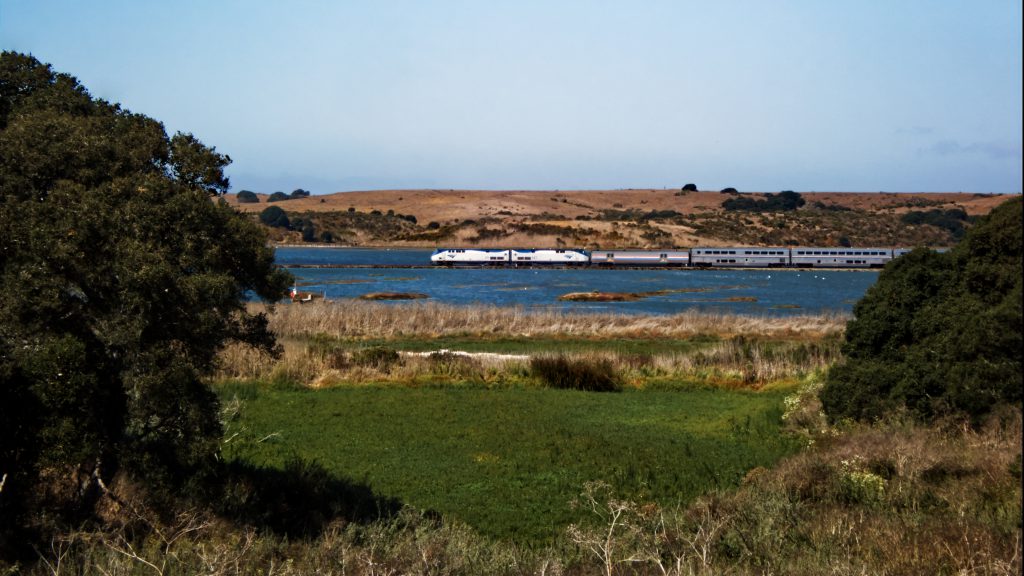
28 September 2019
© Allison J. Gong
Sometimes visitors to the slough don’t believe that those tracks are actually used.
Much of the land that the ESNERR sits on used to be a dairy. These barns are, I think, the only dairy buildings that remain. Visitors aren’t allowed into Little Barn, but we can walk through Big Barn. It is used for occasional equipment storage and is inhabited by barn owls. Sometimes we find owl pellets on the ground beneath the owl boxes mounted in the barn. It is also not unusual to find pieces of those old-fashioned glass milk bottles near the trails.
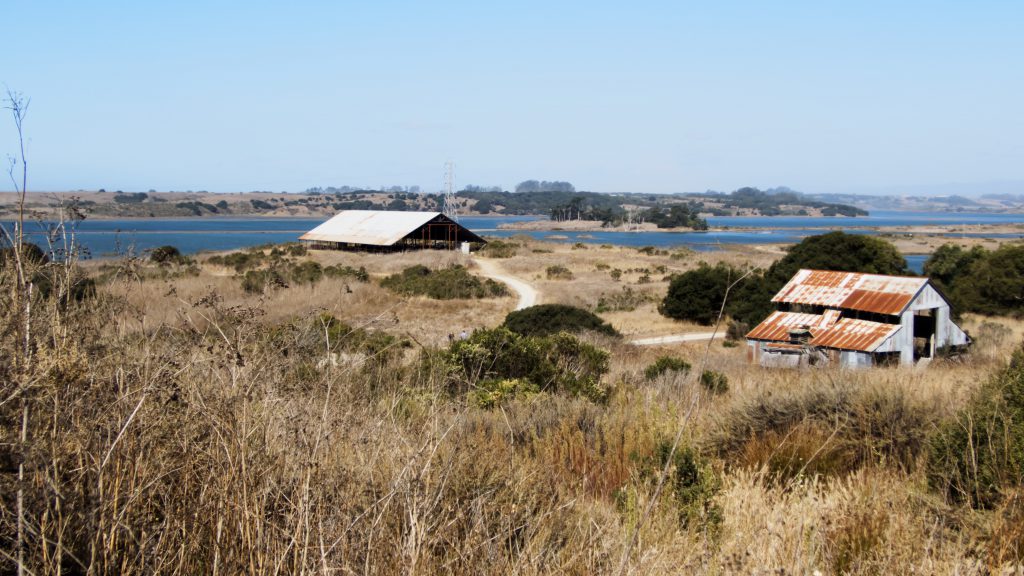
28 September 2019
© Allison J. Gong
When I was a little kid I disliked autumn because the shortening days meant that summer was over and winter was coming. As I grow older, though, and gain a presumably more mature outlook on life, I am more able to appreciate the glory of autumn. I still think spring is my favorite season of the year, but autumn in California is indeed golden and lovely.
